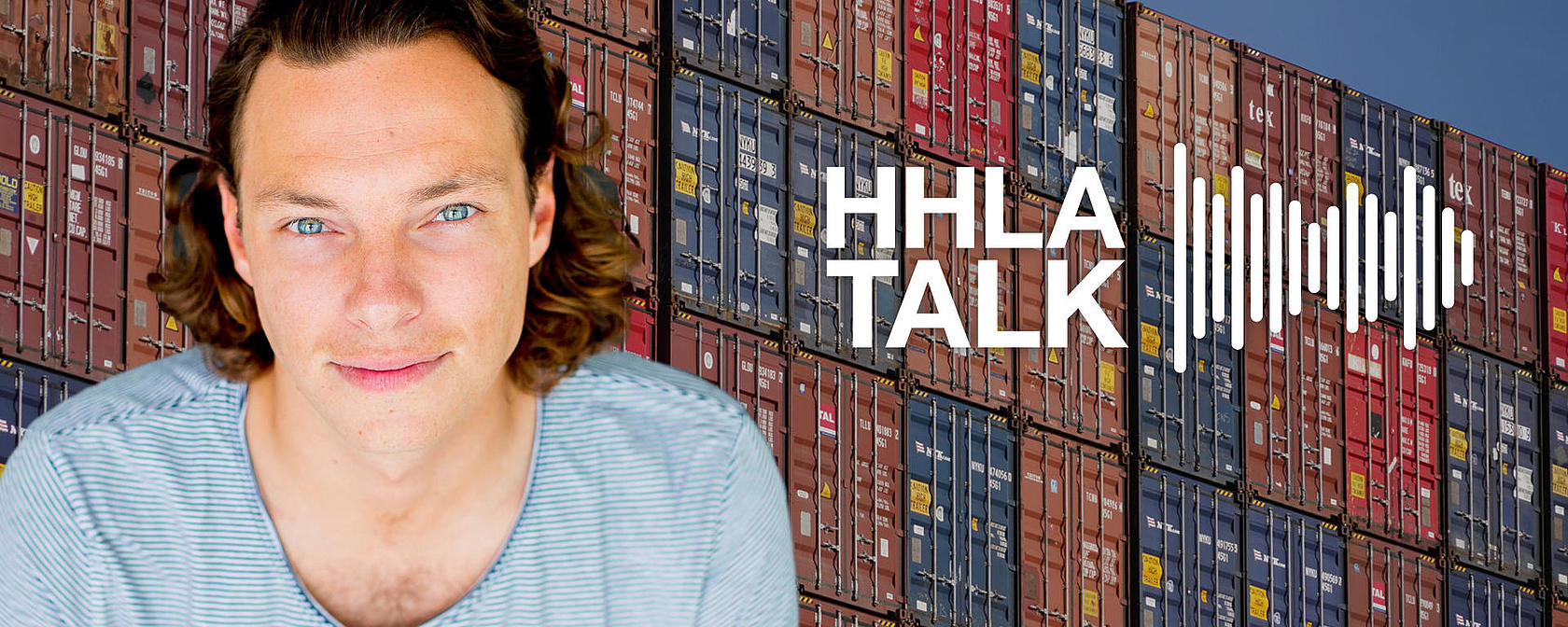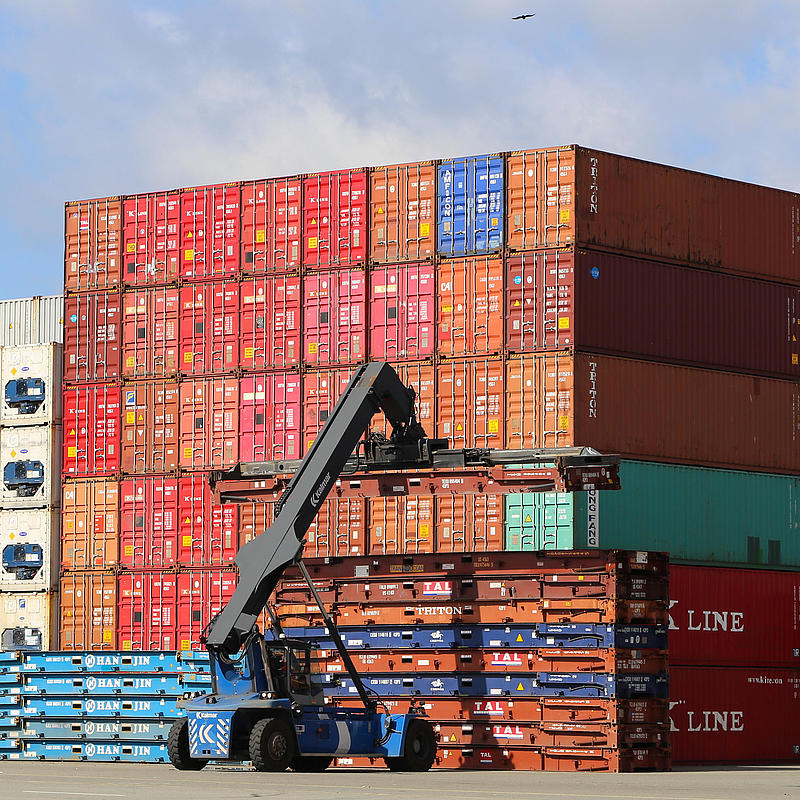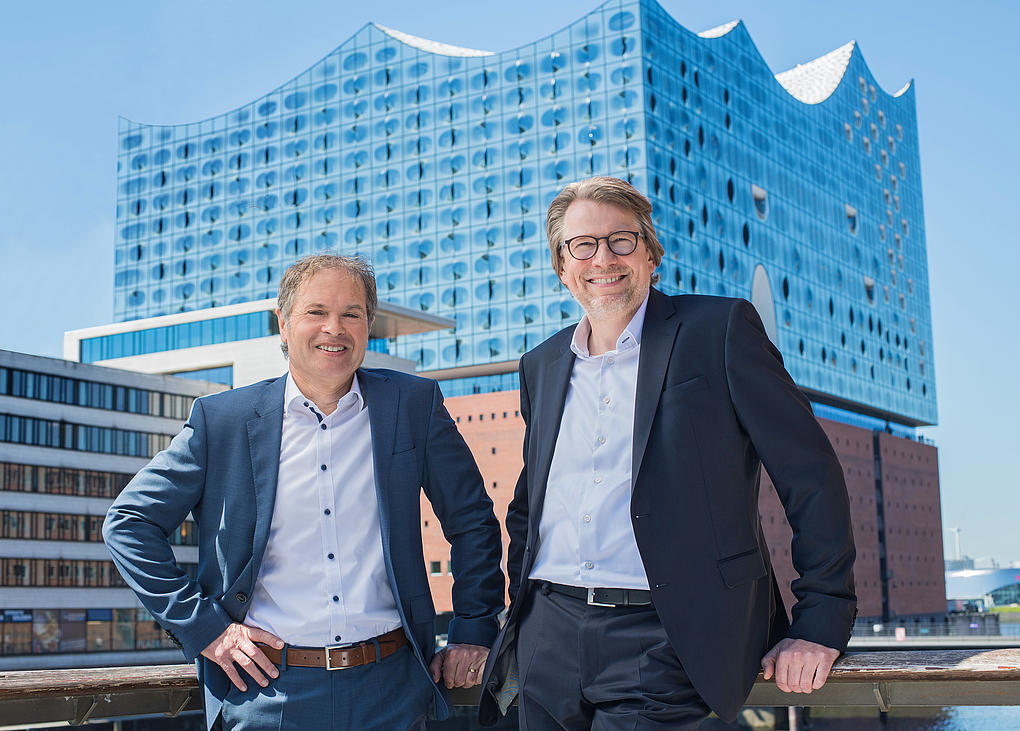Quicklinks
Quicklinks

How can the transport of empty containers be simplified and their availability improved? In this HHLA Talk, Nick Poels, Head of Transport Execution at Transporeon, makes a few recommendations. The well-known founder is currently in charge of Transport Execution at Transporeon. In 2013, he founded SupplyStack and served as the CEO there for 10 years. In January 2022, SupplyStack was taken over by Transporeon.
Supply chains all over the world continue to be disrupted by crises. The impact of this is especially apparent in the container shipping industry and in the ports. How do you explain this?
There’s no short answer, but let’s start by focusing on containers. A good example: last June, there was a traffic jam of approximately 100 ships in the North Sea. Some ships couldn’t be processed in the ports since there was no more room for empty containers in the depots. The main reason was that the disruptions caused by the pandemic resulted in supply chain delays, which meant more containers were needed. Therefore, the production of containers greatly increased. After the situation improved, there was a surplus of empty containers. Now the low demand in Europe has led the empty containers to pile up, so that congestion in the terminals and warehouses threatens to increase. This also puts pressure on container prices and leasing rates, and causes storage problems. But no matter where exactly the individual problem lies, it’s clear that delays and traffic jams mount up along transport and supply chains, particularly in times of crisis.

One solution you suggest is to bundle the import and export of empty containers?
Yes, this provides clear advantages. But to do it, we’ll have to explore new avenues. If empty containers are transported without detours from the importer to the nearest exporter, it relieves the depots and temporary storage spaces. At the same time, this saves transport routes and therefore carbon emissions, since empty containers have to be moved less en route to the new location. It also reduces lead times and makes supply chains more resilient.
What technical requirements are necessary to facilitate direct delivery of empty containers to the right exporter?
The basis for successful import-export bundling is real-time visibility (RTV). Currently, importers mostly return empty containers to depots, which later redistribute them to exporters. To find out which container can most efficiently be passed on directly from the importer to an exporter, you mainly need a collaborative digital platform with real-time visibility data on demand. This is where RTV comes in. You can only make a realistic estimate of the time of arrival – which we logistics specialists refer to as the ETA – with real-time data. Real-time ETAs and site data are crucial for efficient and timely route planning.
Does the company already have this RTV data?
It often does. But there’s one challenge: if RTV data does already exist, it’s very fragmented and it partially lies with various stakeholders or is distributed across different applications. If you want to know more about the status of a shipment, a system often has to aggregate the modalities and sub-orders from a number of applications in order to get a complete picture. This process is time-consuming and often hard to carry out.

Generally, standardised data exchange between all participants in the supply chain would increase interoperability. This would allow them to work together more closely and increase the efficiency of the entire system. Modern transport management platforms make this possible. To put it differently, a common network of transport data that is as far-reaching as possible is needed to make full use of RTV’s possibilities.
What does this mean with regard to empty container trips?
Shared location data on empty containers creates transparency for the participants. If they know where shipments are, they can discuss empty container movements among themselves. For instance, Transporeon’s transport operations hub helps forwarders manage the approval process for an exporting customer to reuse an empty container that was imported by a customer. Such a permit can be granted directly by an ocean carrier or via an online platform.

So data exchange considerably simplifies collaboration among all participants.
Exactly, and it makes complicated agreements by telephone or email unnecessary. But not only that. A unified collaborative platform with real-time data that is supported by machine learning algorithms paves the way for route recommendations and optimisations that efficiently manage the return or forwarding of empty containers.

Can shared digital platforms open up additional advantages for transhippers and forwarders?
There are many advantages when RTV, modern data analysis and the networking effect come together. The data that is collected for tracking many empty container shipments can be used to automatically calculate the optimal return time as well as demurrage and detention charges. Looking ahead, other challenges will be able to be solved as well. These include traffic jams in regular “bottlenecks” such as ports or canals, or on inefficient transport routes.
To summarise, the more real-time data is collected and the more participants work together in a shared network, the more efficiently logistics processes can be designed.
More efficiency benefits everyone involved – importers and exporters as much as trucking companies and port terminals. When we simplify and strengthen collaboration among participants and strive for greater efficiency, we are truly preparing our supply chains for the next disruption!